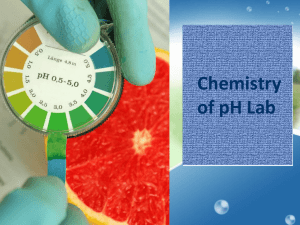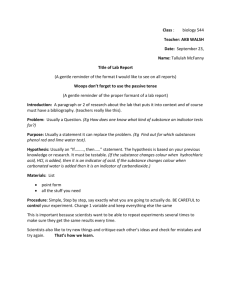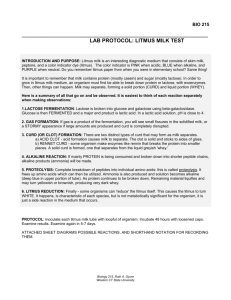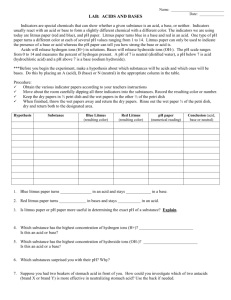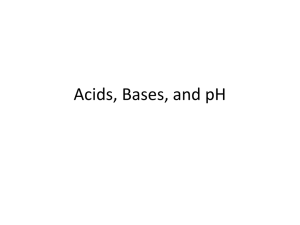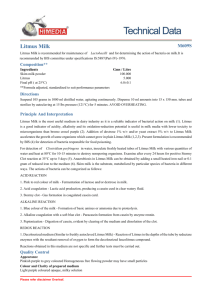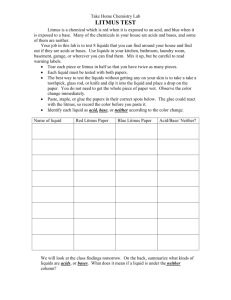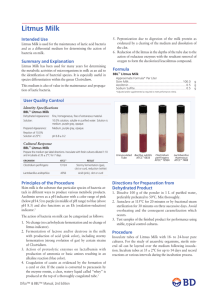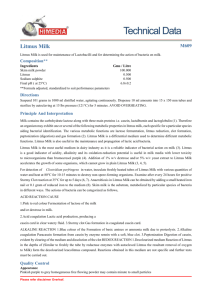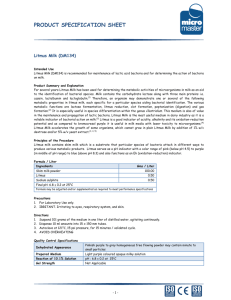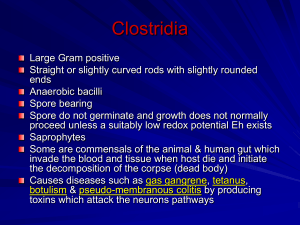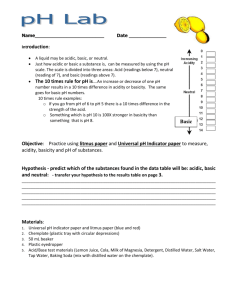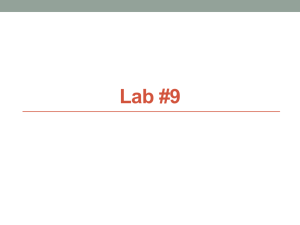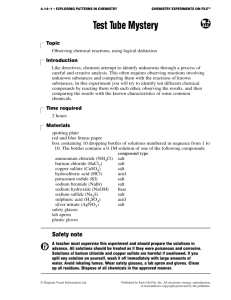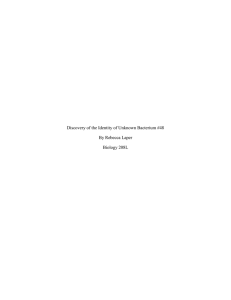litmus milk use
advertisement
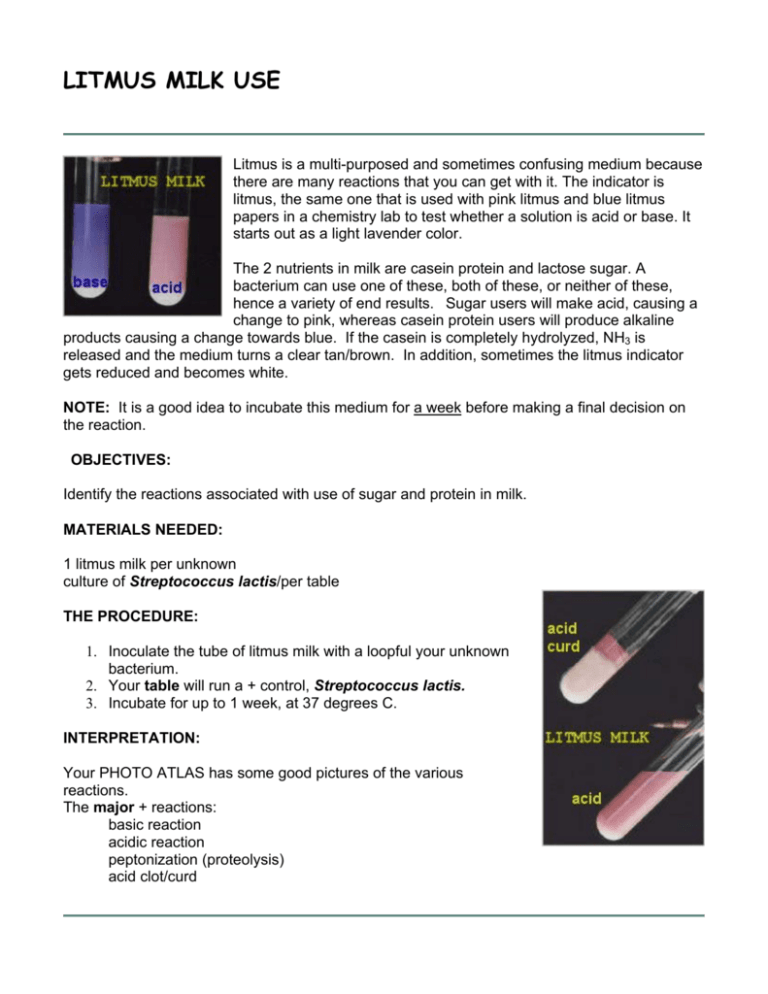
LITMUS MILK USE Litmus is a multi-purposed and sometimes confusing medium because there are many reactions that you can get with it. The indicator is litmus, the same one that is used with pink litmus and blue litmus papers in a chemistry lab to test whether a solution is acid or base. It starts out as a light lavender color. The 2 nutrients in milk are casein protein and lactose sugar. A bacterium can use one of these, both of these, or neither of these, hence a variety of end results. Sugar users will make acid, causing a change to pink, whereas casein protein users will produce alkaline products causing a change towards blue. If the casein is completely hydrolyzed, NH3 is released and the medium turns a clear tan/brown. In addition, sometimes the litmus indicator gets reduced and becomes white. NOTE: It is a good idea to incubate this medium for a week before making a final decision on the reaction. OBJECTIVES: Identify the reactions associated with use of sugar and protein in milk. MATERIALS NEEDED: 1 litmus milk per unknown culture of Streptococcus lactis/per table THE PROCEDURE: 1. Inoculate the tube of litmus milk with a loopful your unknown bacterium. 2. Your table will run a + control, Streptococcus lactis. 3. Incubate for up to 1 week, at 37 degrees C. INTERPRETATION: Your PHOTO ATLAS has some good pictures of the various reactions. The major + reactions: basic reaction acidic reaction peptonization (proteolysis) acid clot/curd QUESTIONS: 1. You are testing the bacterium's ability to use ________ and ________ in this medium. 2. What does a basic reaction look like on this medium? 3. The production of acid means that the bacterium is using the _____ in this medium, producing acid as a by-product. LAB MANUAL: TABLE OF CONTENTS 8/2009, Jackie Reynolds, Richland College
